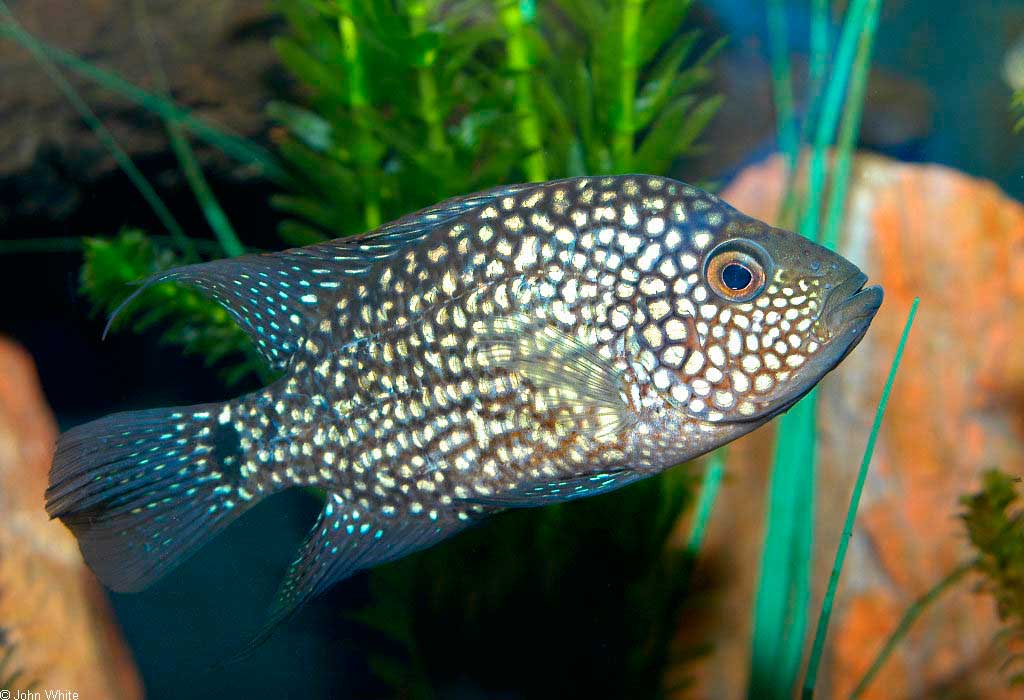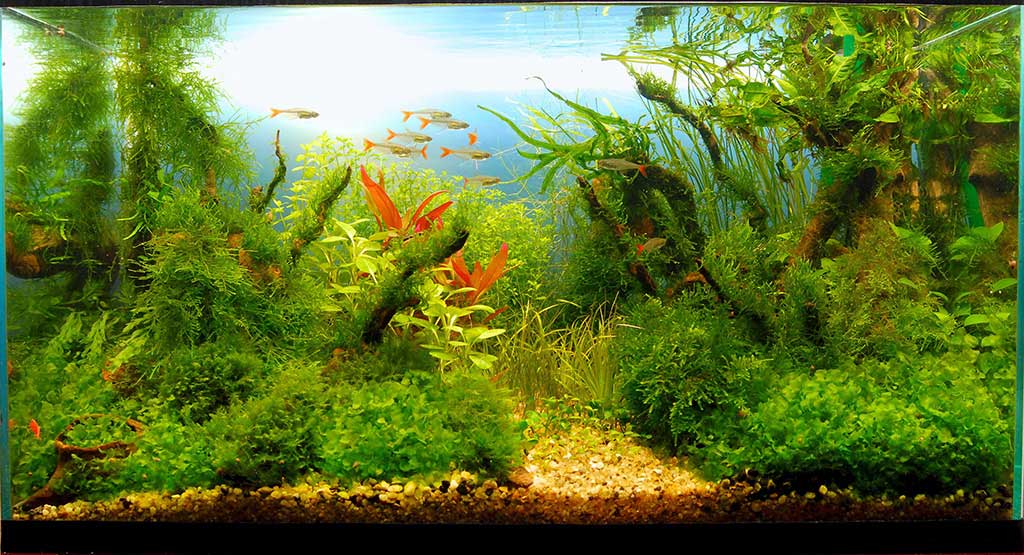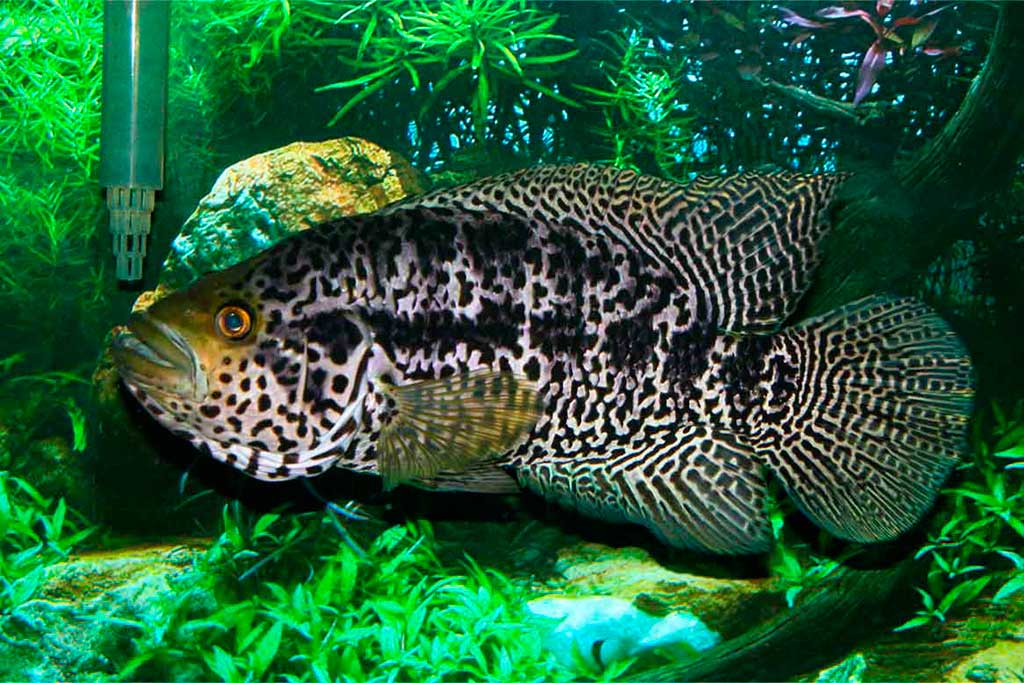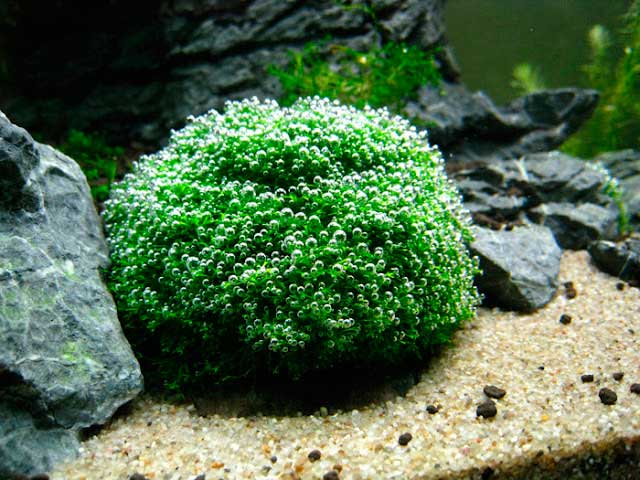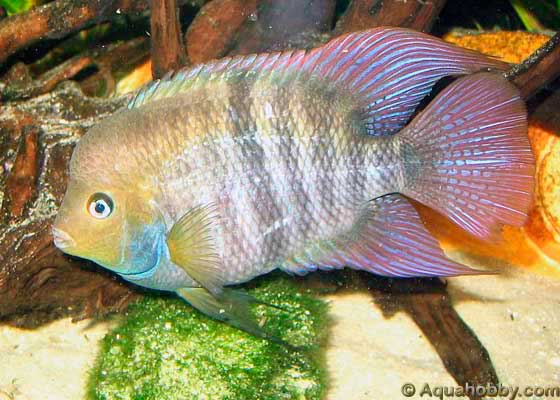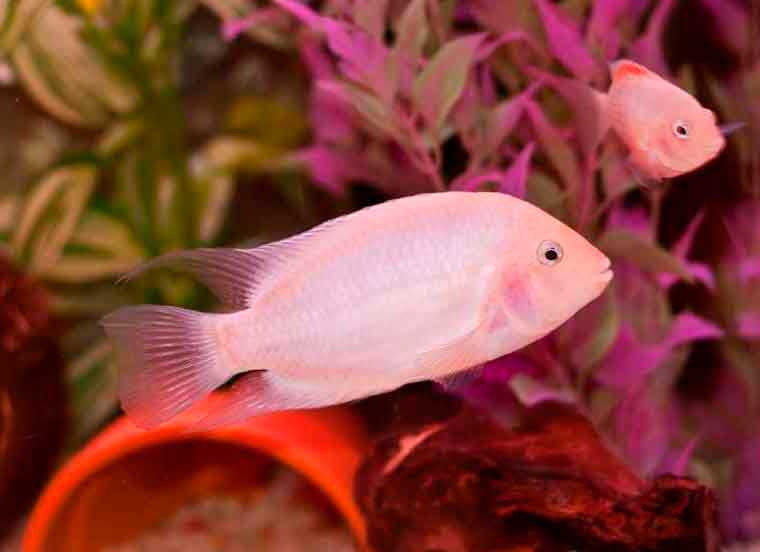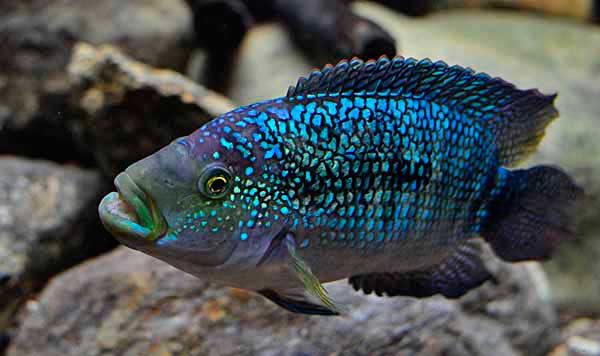The Blue Acara, also known as the Diamond Cichlid, is another fascinating representative of American cichlids. Its stunning coloration captivates aquarium enthusiasts, making it a popular choice despite the need for a reasonably spacious tank. Let’s take a closer look at this remarkable fish.
Species Description
In their natural habitat, blue acaras can grow up to thirty centimeters in length. But in aquariums, their size rarely exceeds fifteen centimeters. Their body color varies from brownish-green to olive, decorated with small turquoise spots. These spots are scattered over the body and unpaired fins. Depending on the angle of illumination, these spots shimmer from emerald to light blue shade. This fact gave the fish the name “diamond cichlid”.
Sexual maturity is reached around eleven months of age, and they can live up to fifteen years under proper care. Blue Acaras are territorial and facultatively monogamous. Males are slightly larger than females and have a more pronounced forehead bump. During breeding, the male develops a pointed anal protuberance, while the female’s protuberance, known as an ovipositor, resembles a truncated pyramid.
Housing and Care
Blue acaras require a fairly large aquarium. A volume of at least 120 liters for one pair. If you plan to keep several pairs or combine them with other species, the volume of the aquarium should be increased accordingly.
Since Blue Acaras and their relatives tend to constantly disturb the substrate by stirring the water and uprooting plants, it’s best to use either dark-colored granite gravel or fine dark gravel. The dark background accentuates the fish’s colors. Additionally, create “hiding spots” on the bottom using large rocks and driftwood, and set up caves and crevices. This landscape best mimics their natural habitat.
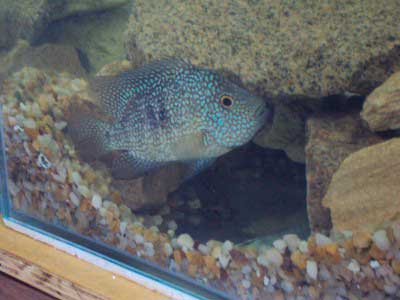
Select robust, fast-growing plants like Vallisneria, Elodea, Anubias, and large Cryptocoryne species. Plant them in pots or cover their roots with large stones to preserve their roots from constant disturbance.
Regarding water parameters, Blue Acara are not overly demanding. pH can range from 6 to 8.5. Water hardness is between 8 and 25 °dH. However, these cichlids do not tolerate low temperatures well. Therefore, the recommended temperature range for their care is 25-27°C.
Moderate lighting will suffice, with a general intensity of 0.3 to 0.5 watts per liter using fluorescent lamps.
Blue Acaras prefer clean water and are intolerant to heavy organic pollution. Therefore, the aquarium should be equipped with filters, preferably a biological filter. If not available, weekly water changes of 30% of the tank’s volume are essential. Adequate artificial aeration of the water is also advisable.
Compatibility with Other Fish
Keeping Blue Acara with other fish can be challenging due to their territorial nature. To minimize aggressive confrontations, provide adequate space with territorial separation. Use rocks, caves and thickets of plants. Although when raised together from an early age, they can coexist peacefully with larger species. Smaller fish may be taken by them for food.

Remarkably, bottom-dwelling catfish seem to be the only suitable tank mates with minimal conflicts. They often appear to ignore each other, making them suitable companions. Have you observed any other compatible tank mates?
Feeding Blue Acara
Feeding Blue Acaras is uncomplicated as they are omnivorous and will eat anything provided. Their diet can include insects, tubifex worms, earthworms, small crustaceans, and lean meat. Occasional vegetarian offerings like blanched and chopped lettuce leaves, dandelions, and oat flakes are also beneficial. Due to their accelerated metabolism, it’s best to feed them more frequently in small portions. However, avoid overfeeding as it can lead to health issues.
Breeding of blue acara
Mating can take place either in the main aquarium or in a specially prepared aquarium for breeding. Breeding usually occurs every two months at a temperature of 28-30 degrees Celsius.
In the aquarium it is useful to imitate the annual cycles. This helps the female to lay up to a thousand eggs at a time. And the offspring will be strong and healthy. Lower the temperature to 25 degrees Celsius for two to three months. Then raise it to 28-30 degrees Celsius. This stimulates breeding when necessaryd. This way, the aquarist can control the spawning period conveniently.
The incubation period varies from three to six days, depending on the temperature. When the fry start swimming, they should be fed with Artemia nauplii.
As the fry grow, provide them with larger food items and sort them by size to prevent cannibalism.
Blue Acaras are relatively easy to maintain, despite their specific needs. The most significant obstacle is providing a large enough tank for their care. Nevertheless, their splendid coloration outweighs the difficulties, making them a cherished addition to any aquarium.
